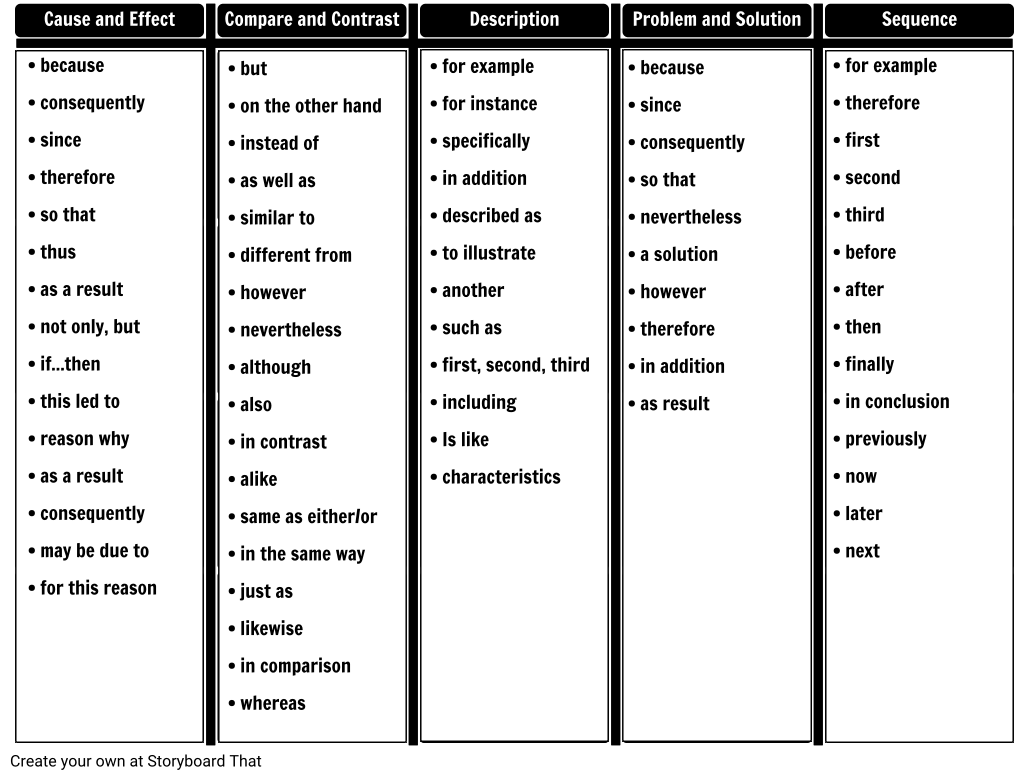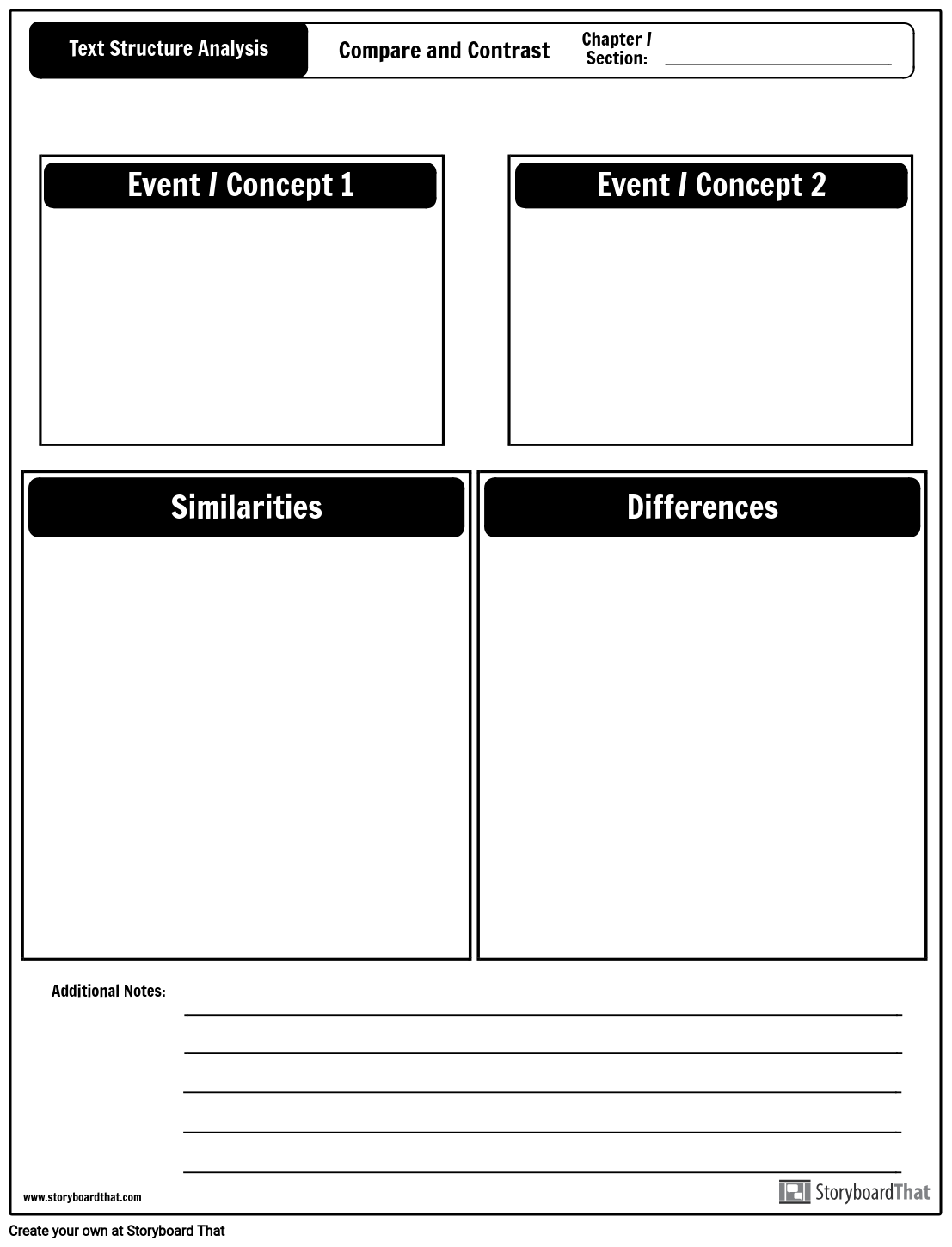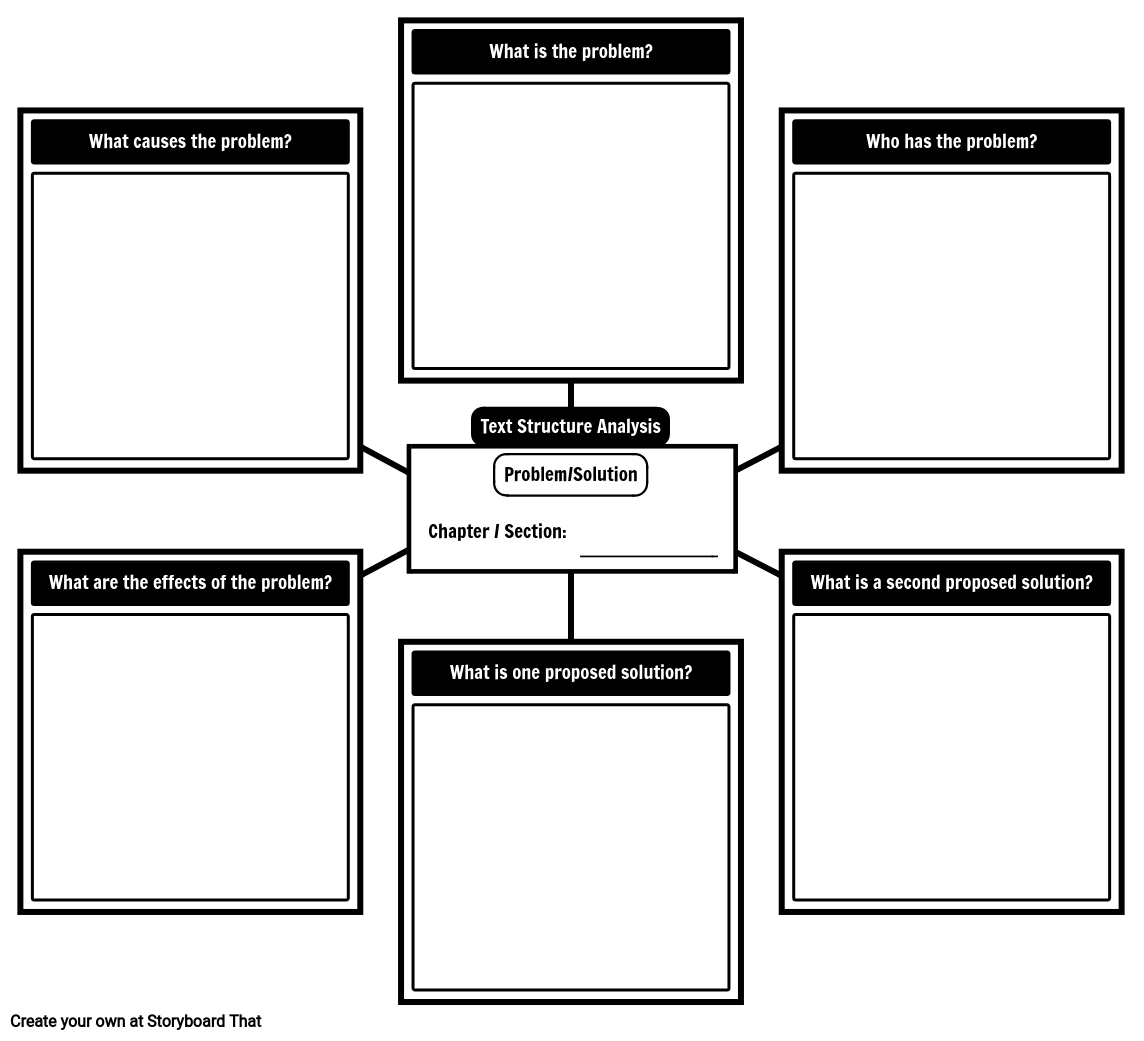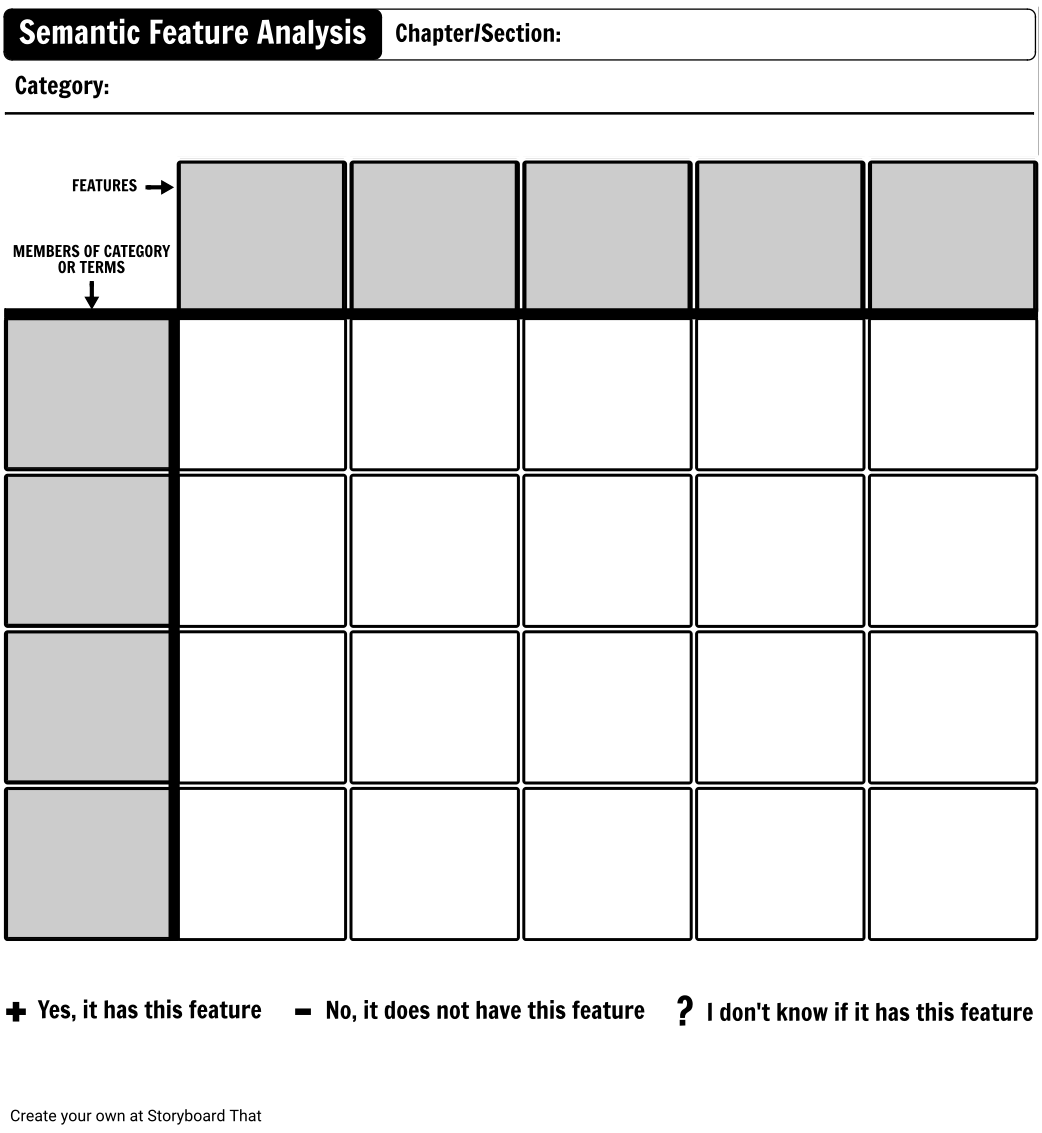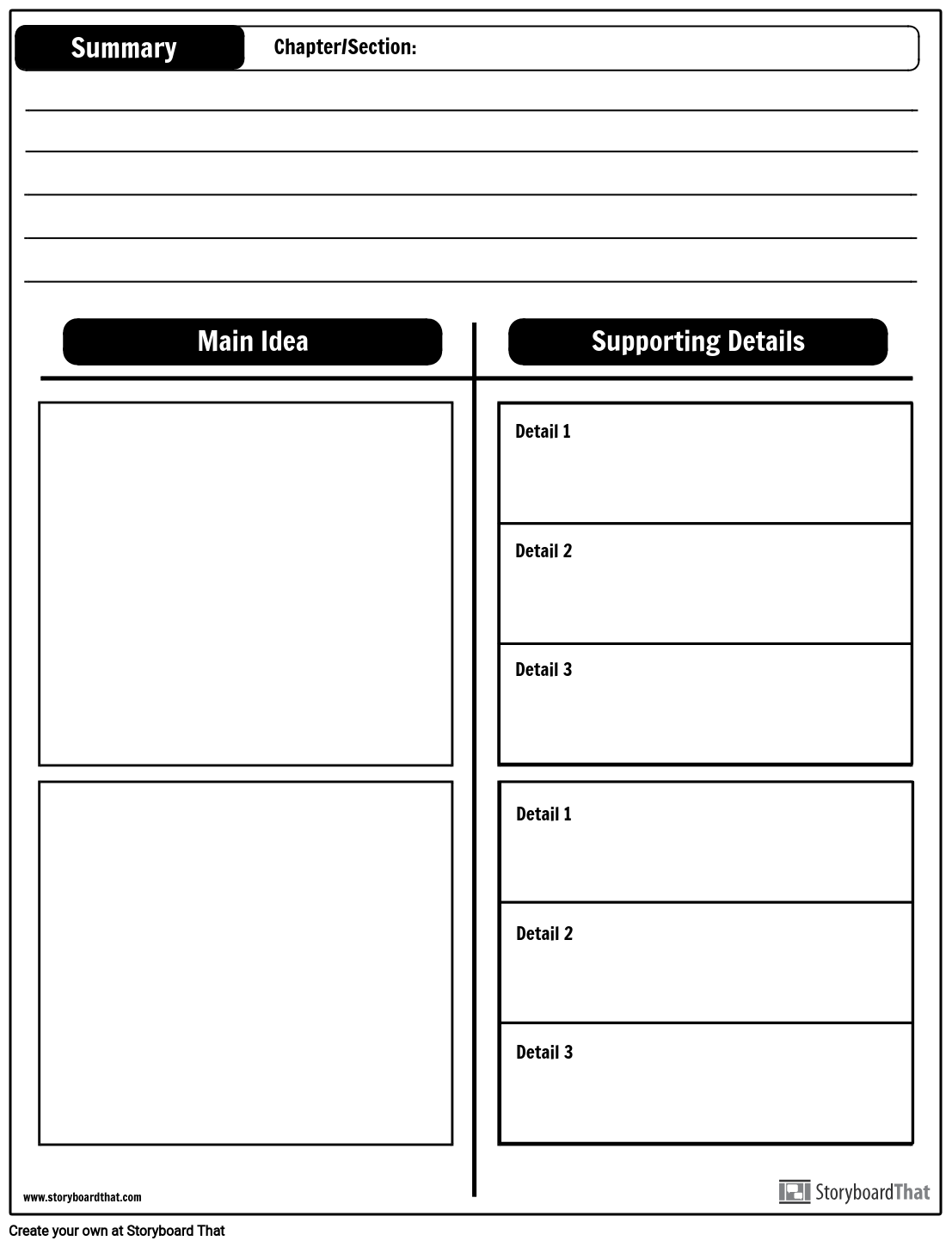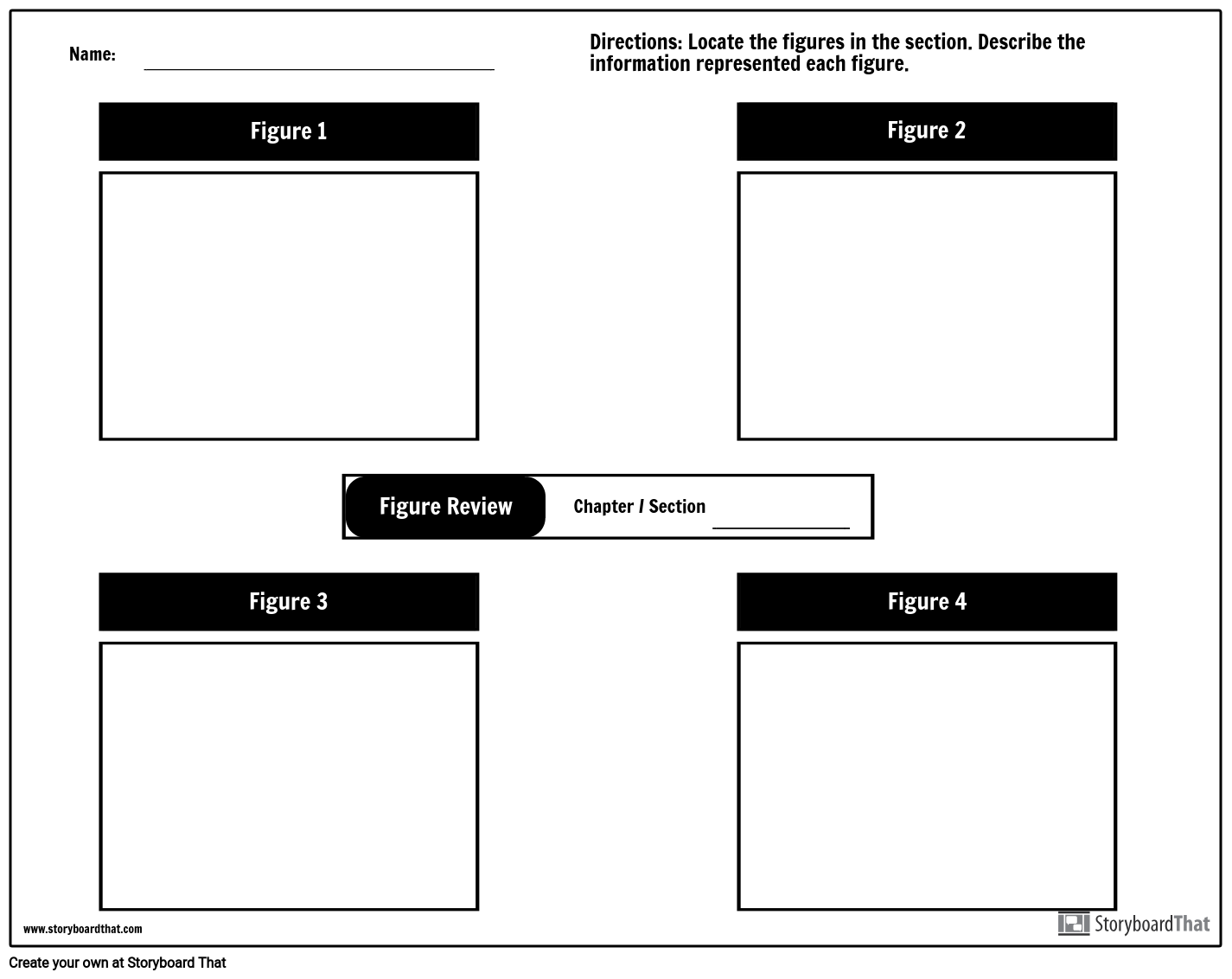Expository Text Activities
Learning to navigate instructional and expository texts can be a challenge for beginner readers. What is expository text? Expository text is the communication of information with the primary purpose of education. Thus, the text is efficient, but not always effective at communicating concepts in ways that are easy to grasp. Students with limited exposure to formal education, students with learning disabilities, English Language Learners, and even average students may have a difficult time identifying the structure of the text and comprehending material with content-specific vocabulary.
Providing students with direct instruction, as well as scaffolded instruction in these skills, will increase comprehension, improve recall of material, prepare students for note-taking, and aid in the development of research skills. Storyboard That makes the characteristics of expository text less of an obstacle for students seeking to absorb the information. The following article explains the different structures used in this type of writing, as well as how to identify and understand these structures.
Expository Text Structures
Expository texts typically follow one of five formats: cause and effect, compare and contrast, description, problem and solution, and sequence. Students can learn to recognize the text structure by analyzing the signal words contained within the text. After properly identifying the types of expository text, it will be easier for readers to ascertain the key points of an expository text and know what it is they are supposed to be taking away from the passage. There are helpful charts and note-taking tactics that can be used for each type to best organize readings and create summaries.
| Typical Text Structures of Expository Text | |
|---|---|
| Cause and Effect | Ideas, events in time, or facts are presented as causes of the resulting effect(s) or facts that happen as a result of an event. |
| Compare and Contrast | Information is presented by detailing how two or more events, concepts, theories, or things are alike and/or different. |
| Description | A topic is described by listing characteristics, features, attributes, and examples. |
| Problem and Solution | A problem and one or more solutions to the problem is outlined. |
| Sequence | Items or events are listed in numerical or chronological sequence, either explicitly or implied. |
Expository Text Examples of Signal Words
The chart below can be used by students to help them determine the text structure they are looking at. Students can highlight, circle, or cross off words in the chart as they read expository texts. Help children build a foundation for this skill by first working as a group with them on the board.
Once students are comfortable with the process, have them work in small groups or in pairs until they are ready to work independently. If some students are excelling where others are falling behind, encourage those who understand to aid in teaching text structure to those who are struggling.
Once students have determined the text structure, they can use one of five graphic organizers created on Storyboard That to organize the information presented in the chapter. First, the comprehension of readers will dramatically improve. The Storyboard That graphic organizers will also help students recognize the focus of a chapter and make connections. The activities can even help improve recall.
Types of Text Structures
1. Cause and Effect
In the cause and effect structure, students identify the cause of events, actions, or ideas presented in a chapter or section.
The goal of cause-and-effect text structures is to explain events that happen as a direct result of other events. Some examples include the effect of water evaporating as a result of hot sunlight, or being out of breath after running a mile. Cause and effect can be very straightforward in some informational texts, while in others, the expository text meaning is more implicit. This creates more work for students, as they have to tease out the information.
The cause and effect of events such as war, described in a history text may be more linear than the cause and effect of scientific discoveries, such as vaccinations described in a science text. Although the content and organization will vary, the text structure remains the same and can be broken down and organized into its most basic and therefore, more easily understood, components.
The cause and effect structure and the next structure, compare and contrast, are two of the most commonly-seen categories in expository essay examples for standardized testing of reading comprehension. Therefore, it is of utmost importance that students are equipped with the proper tools for being able to tackle them with competence and success.
2. Compare and Contrast
In the compare and contrast format, students spot the similarities and differences between two or more events or concepts.
In history class, for example, students are often expected to be able to identify the differences between two time periods, the similarities and differences between two cultures, wars, political leaders—even artwork! When teachers present information from two different categories in this manner, they do so in a way that makes the information accessible and relevant. It is much easier to digest for youths than just teaching one category and following up the lesson with another one that on the surface, seems unrelated.
When texts engage in this latter process, without a teacher’s verbal explanations, the words may seem even more muddled. Providing students with a way to organize the data will increase recall and retention while also increasing their ability to identify the text structure in future instances.
This same strategy can be applied to comparing events or procedures in science and math. For example, a student may be more likely to remember what Christianity and Catholicism are if they can remember what is the same and what is different between the two.
3. Description
In description expository text structures, students describe a topic by identifying and explaining its characteristics, features, and attributes, and by providing examples.
When a text spends time describing a particular person, event, time period, or object, students can lose the facts in the words. Organizing the key details will provide students with a visual aid and quick reference, and increase their ability to retain the information presented in the text.
For example, an expository text may go into extensive detail about how water moves through the water cycle, taking several paragraphs to do so, even though the water cycle only has five steps that could just as easily be listed in a sentence.
The extra information will enable students to gain a deeper understanding, but they still need to be able to pick out the five key steps in the cycle and organize the descriptive information beneath these steps. Descriptive graphic organizers assist eager readers with the aforementioned process.
4. Problem and Solution
In the problem and solution structure, students pinpoint the problem and one or more solutions to the problem as described in chapters or sections of expository texts.
Texts that are framed around a problem and its solutions come in all forms. History texts will often identify a problem that occurred, and then outline or describe the various efforts that were made to solve the problem. Science texts can define specific problems and their solutions. The arts and humanities will also define problems and outline potential solutions.
A concrete example would be a passage describing the problem of climate change, and then outlining several possible solutions, such as recycling, reducing fossil fuel usage, and turning off the water while brushing teeth. Then, it would discuss the strengths and weaknesses of the solutions, equipping the reader with tools to decide how they think the problem should be solved, even if the text offers its opinion on the best solution.
Because the problems and solutions may be less explicit in some texts, it is beneficial for students to organize the information in this way so that they have a clearer understanding of the concept as a whole. It is good for readers to get into this habit, as the complexity of problems and solutions will increase with age and level of education. The textual organizer can be used by kindergarteners and Ph.D. students alike.
5. Sequence
In the sequence structure, students identify and describe items or events in sequences.
In sequence text structures, passages will typically follow a timeline of events as it takes the reader through a story. Students can spot them by committing certain chronological signal words to memory, such as:
- Before and after
- Since
- Later
- First, second, third
- Last
- Moreover
- Thereafter
- Hereafter
- Periodically, from time to time
- Formerly, previously
- Subsequently
- Today, yesterday, next week
Sequences can be implicit or explicit. Step-by-step procedures, math, and science texts will typically state a sequence explicitly. Recall the water cycle example from above: the text would begin its story at any point in the water cycle, and walk students through what happens chronologically to the water as it gets evaporated, stored in clouds, and rained back down.
Other texts, such as history or literature, may have an implicit sequence. For example, the school-to-prison pipeline in low-income American neighborhoods requires the ability to understand and connect nuances in order to fully paint the sequence picture.
Helping students to identify the sequences contained within a text will increase comprehension and retention of the information. One of the best ways to organize sequence expository text is to write the events or items down in order using Storyboard That’s vertical column organization method.
6. Bonus Structure: Persuasion
A sixth type of structure, persuasion, is recognized by some academic institutions. In persuasive passages, there is typically an introduction of a thesis argument for why an idea about an idea is correct, or action should or should not be taken. Then, the passage outlines supporting arguments for the argument it is trying to “persuade” its readers of, followed by a counterargument, a rebuttal of the counterargument, and a conclusion.
Examples of persuasive text are most commonly found in academic or scientific journals, where researchers are trying to persuade readers that their thesis statement is correct, or that their experiment uncovered certain results. This type of structure can also be found in more modern textbooks arguing ideas, such as why a certain law might be overturned in the coming years, or why an old scientific concept is looking for traction as discoveries are made in the field.
Storyboard That’s storyboard creator can be used to edit some of the templates above to best help students to dissect this type of format.
- First, readers should have somewhere at the top of their worksheet to write the overarching thesis, or argument, of the work.
- Then, there should be a place where readers can write 3-5 of the author’s offered supporting pieces of evidence as to why their argument is correct.
- Third, there should be a space where students can write down the counterargument of the work, meaning the argument against the thesis of the author.
- Lastly, there should be a place for readers to record whether they think the author is correct, and if so, why.
Content Exploration
While the above information outlines how students can identify and comprehend expository text structure, this is only the first step. In addition to teaching expository text structure, instructors must also teach students how to interpret the content and text features. Merely being able to identify these skeletons means nothing if you don’t know the bones they are made up of.
There are multiple categories of analyzation that can be done to help readers grasp what a passage is actually saying. Mastering content-specific vocabulary, learning how to identify the main idea of a text, summarizing a text, and interpreting the images and figures contained in the text are critical to comprehending the material.
There are several methods used to teach readers comprehension after they have mastered the identification of different text structures. One of the most effective and efficient methods is semantic feature analysis.
Expository Text Features: Semantic Analysis
The semantic feature analysis uses a grid to help students organize information, make connections, and clarify concepts. This activity improves comprehension, vocabulary skills, and content retention. The semantic feature analysis can be used before, during, or after reading. Typically, however, it is recommended that students create the chart before reading, fill it in during reading, and then review it upon completion of the informational text.
The instructor may choose to provide the features and categories or terms. Or, instructors can make their expository text lesson plan more challenging by leaving some or all of the categories in the table blank. Using Storyboard That, this semantic feature analysis chart can easily be edited to meet the needs of any classroom or text. It provides the flexibility necessary for instructors to scaffold instruction of learners at any age or education level.
Examples of text features include:
- Titles
- Headings
- Subheadings
- Bold Print / Key Terms
- Pictures
- Graphs
- Charts
- Diagrams
- Maps
- Examples
- Text Excerpts
Some of the most popular table variables to include are titles, headings, and key terms, as these terms make information more easily transferred into students’ notes for the purpose of studying for a related quiz or exam.
Identifying Primary Points in Expository Text
Identifying the main concept or central idea of a text is a crucial component of reading comprehension and analysis. Developing this skill increases comprehension, increases information retention, and prepares students for writing expository essays.
The following graphic organizer is one of the most fruitful ways to summarize a passage that has been read for educational gain. It consists of three sections: a summary space; main idea spaces; and supporting details spaces. These can be filled in with direct quotes from passages, drawn diagrams explaining concepts, or paraphrasing of concepts in a reader’s own words.
This worksheet is helpful for students and teachers alike. It can be used by teachers as a checklist to make sure they do not forget anything during a passage review in class. Likewise, it can be filled out by students during their reading of the passage or during review classes to ensure they have ascertained the key points in their reading.
A slight tweak of this worksheet also makes it valuable for use in a professional business setting. As is, it is intended for a more juvenile audience. However, by changing the headings to ones like “Key Takeaway,” and “Evidence,” it can be used as a handout when proposing ideas to management.
For example, individuals that are making a presentation to the board of their company about why it should invest in clean energy can fill in this sheet with the primary points of their argument, and hand it out to the board to accompany their presentation. Then, it will be easier for members to follow along, and they will have a way of remembering what was said during the presentation, even if they did not take notes or pay well-enough attention.
Figure Review for Types of Expository Text
Some passages of informational text contain figures. Figures are most common in STEAM (science, technology, engineering, art, mathematics) classes, such as physics, biology, and geometry. Interpreting the images, charts, graphs, and other figures contained within a text can improve a learner’s ability to comprehend a concept. This is especially true for those who are stronger visual learners than they are textual learners. The figure review is a great way to preview a text or it can be completed while students read.
Most text structures, such as scholarly articles, chapters, and books, label figures in an organized manner using numbers, letters, or a combination of both—Figure 1.2; Figure A; Figure 1(c), etc. The following Storyboard That worksheet template can be edited to represent the figures that are in the assigned reading for a class. Readers can then fill in the space below the figures with a brief blurb of what they have understood the figure to convey.
Most of the time, when reading academic works, students skip over figures altogether. In fact, it might be a better use of their time to only view the figures! Storyboard That’s mapping of figures is a highly effective method of forcing students to pay more attention to them, increasing their comprehension.
How to Teach Inference with Expository Texts
Define Inference
Before you begin, make sure your students understand what inference is and why it's important in reading comprehension. Explain that inference is the process of drawing conclusions or making educated guesses based on evidence in the text.
Choose Expository Texts
Select expository texts that contain implicit information that requires inference to understand. Choose texts that are age-appropriate and relevant to your students' interests. You might select texts from a published collection or find articles online.
Introduce the Text
Introduce the text to your students and preview it together. Explain the purpose of the text and identify any unfamiliar vocabulary or concepts.
Read the Text
Read the text together as a class, either aloud or silently. Encourage students to identify and underline evidence in the text that supports their inferences.
Make Inferences
Guide students through the process of making inferences based on the evidence in the text. Model the process by thinking aloud and explaining your reasoning. Then, have students work in small groups or pairs to make their own inferences and discuss them with their peers.
Check for Understanding
Check for understanding by asking students to share their inferences with the class and provide evidence from the text to support their conclusions. Encourage students to respectfully debate and challenge each other's inferences.
Extend the Learning
Extend the learning by having students write their own expository texts that require inference to understand. Encourage them to include implicit information and evidence that supports their inferences.
Assess Understanding
Finally, assess students' understanding of inference through quizzes, writing assignments, or other assessments. Make sure that your assessments reflect the skills and knowledge you want students to acquire, such as identifying evidence to support inferences and explaining their reasoning. Use the results of your assessments to guide further instruction and support for students who may need it.
Frequently Asked Questions about Expository Texts
What is expository text and why does it need to be taught?
Expository text is the opposite of narrative fiction; it means passages of writing that exist for the purpose of conveying information for the readers’ education, with the end goal of having taught the reader the material in the words. It is important to assist readers in navigating these texts, as not everyone is a verbal learner; some require visuals, writing, and/or audio.
What is the best way to teach expository text structure to students?
Storybook That’s organization and analysis sheets harbor some of the best tools out there for helping students of all ages and academic levels to improve their reading comprehension skills of academic text.
How are the ideas in a text organized?
There are five primary structures as detailed above: cause and effect, compare and contrast, description, problem and solution, and sequence.
What is the best way to use Storyboard That’s organizers?
There is no best way! A teacher’s creativity is the limit when it comes to incorporating these handy organizers into lesson plans. They can be used for teachers and students of any age and academic level.
What else can I use Storyboard That for?
Explore our website and uncover the large variety of digital storytelling techniques for personal, business, or educational use. We have tons of premade lesson plans, worksheet templates, and poster templates for you to use right now! The opportunities are endless.
Introductory School Offer
ONLY$500
- 1 School
- 5 Teachers for One Year
- 1 Hour of Virtual PD
30 Day Money Back Guarantee • New Customers Only • Full Price After Introductory Offer • Access is for 1 Calendar Year
© 2025 - Clever Prototypes, LLC - All rights reserved.
StoryboardThat is a trademark of Clever Prototypes, LLC, and Registered in U.S. Patent and Trademark Office
